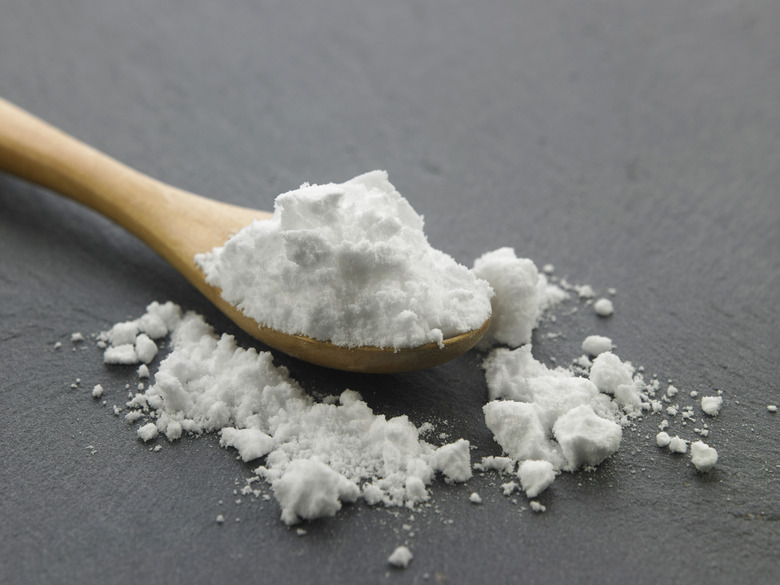How To Use Baking Soda To Neutralize HCL
A hidden talent of sodium bicarbonate — better known as baking soda — is neutralizing acids, including strong varieties such as hydrochloric acid. When you mix baking soda, a mild base, with acids, a chemical reaction turns the acids into harmless byproducts, such as salt and carbon dioxide. Knowing how to use baking soda is simple. With the right supplies and directions, you can safely neutralize hydrochloric acid.
TL;DR (Too Long; Didn't Read)
Baking soda can neutralize excess stomach acid, which contains hydrochloric acid. A drink made with a teaspoon of baking soda mixed in 8 ounces of water can help relieve symptoms of heartburn and acid reflux.
1. Determine Amount of Acid
Determine the amount of hydrochloric acid or HCl used on the item you want to neutralize. Note the size of the bottle of hydrochloric acid to identify the quantity of HCl used. Most industrial applications for hydrochloric acid use less than a gallon per item washed in acid.
2. Personal Protective Equipment
Put on rubber gloves and safety goggles to protect your hands and eyes from the acid.
3. Find Adequate Ventilation
Move the item with hydrochloric acid outside, or to a well-ventilated area, to avoid breathing fumes.
4. Prepare Baking Soda Solution
Pour 5 1/2 lbs. baking soda in the bucket per 1 gallon of hydrochloric acid used on the item. Add water to the bucket at a ratio of 1 part baking soda to 10 parts water.
5. Add Solution to Acid
Add the baking soda solution slowly to the item with hydrochloric acid, pouring no more than 1/2 gallon at a time. Wait five minutes between each 1/2 gallon pour until you run out of the water and baking soda solution.
6. Test the Results
Test to ensure the acid has been neutralized. Mix a small amount of baking soda no more than 3 tbsp. to 1/2 cup water in the bucket. Gently pour the baking soda on the item that had hydrochloric acid on it. If you notice a fizzing reaction after pouring the water and baking soda solution, pour more baking soda and water solution on the item to neutralize the hydrochloric acid. If you see no reaction, you have successfully neutralized the hydrochloric acid; you can safely handle the item. If you have any doubts about remaining acid, simply add more baking soda solution. The baking soda is safe, so there's little harm in overdoing it.
Things Needed
- Rubber gloves
- Safety goggles
- Bucket
- Water
Warning
Do not touch the hydrochloric acid with your hands; it will burn your skin. If you get hydrochloric acid on your skin, pour baking soda on it immediately and call 911.
Cite This Article
MLA
Gutierrez, Louis. "How To Use Baking Soda To Neutralize HCL" sciencing.com, https://www.sciencing.com/use-baking-soda-neutralize-hcl-8591741/. 29 April 2018.
APA
Gutierrez, Louis. (2018, April 29). How To Use Baking Soda To Neutralize HCL. sciencing.com. Retrieved from https://www.sciencing.com/use-baking-soda-neutralize-hcl-8591741/
Chicago
Gutierrez, Louis. How To Use Baking Soda To Neutralize HCL last modified August 30, 2022. https://www.sciencing.com/use-baking-soda-neutralize-hcl-8591741/
